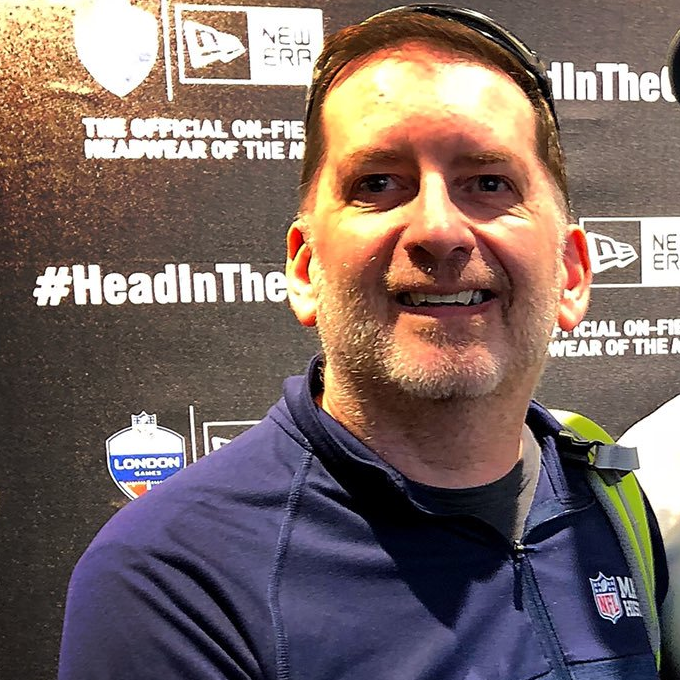NFL Draft History Class: The Rams At #1
By George Somerville
Around this time of year I turn my attention to the NFL Draft. But unlike the vast majority of interested parties, I’m not looking forward – I’m looking back. Why? Because NFL Draft history is not only fascinating, it could also be a guide to what happens in the future!
Which means here we are with another series of History class. So, if y’all are ready, class is in session!
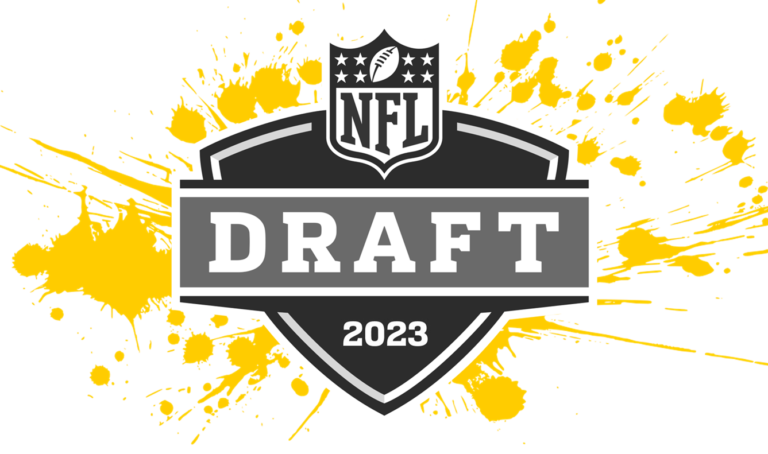
So now that we have seen how little history that the Chicago Bears have had with the #1 draft pick, it made me look into the history that other NFL teams have at the very top of the draft.
So where to start? Well if the Bears have only had the pick twice, who has had the pick the most times?
That title is shared by two teams – the Indianapolis Colts and the Los Angeles Rams! Both teams have lived a nomadic existence, albeit the Rams are a little more travel weary than the Colts.
Nevertheless, both teams have held the #1 pick seven times – which by some margin makes them the leaders of the pack.
So what did the Rams and the Colts do with these picks? Did they use them wisely? Well, in the first of this two-parter, let’s see how the Rams have fared with those valuable #1 picks….
The Rams
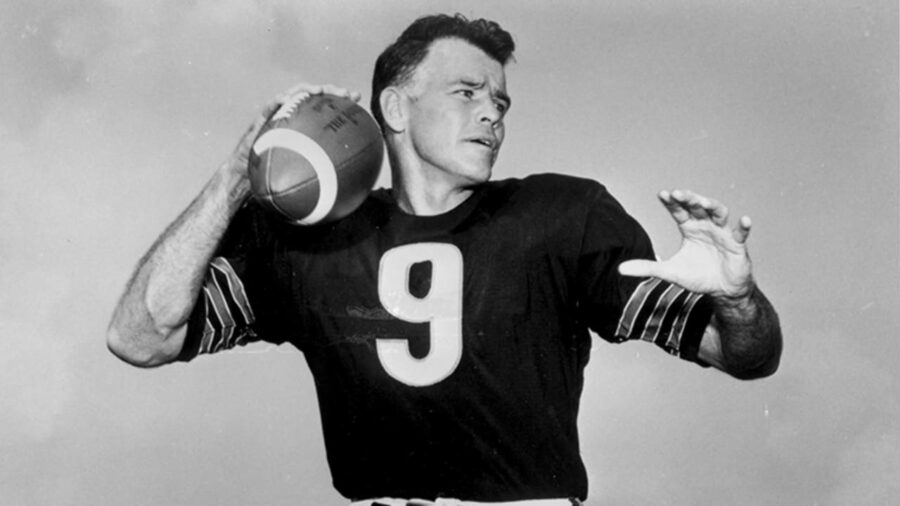
Since 1936 when the Rams were founded in Cleveland, the Horns have moved around the country to Los Angeles to St Louis and then back to Los Angeles again.
The early stages of the NFL Draft had the first pick of the draft determined by a lottery drawing. In 1938 just two years into their existence, the Cleveland Rams were picked out of the hat first and were handed the first pick in that years draft.
If you read the first article in this series, you know that early in draft history teams predominantly – but not exclusively – selected fullbacks with the first pick. The running back ,as we now know them to be, was certainly the predominant position in the NFL, and much like today with quarterbacks, the fullback commanded a high pick premium.
London Calling
So yes, in 1938 the Rams selected Corbett Davis, a full back out of Indiana University. By a twist of fate Davis’ football career would end up in London. But more on that later.
Davis had four successful years with the Rams before he enlisted in to the US Army as a rifleman in 1942. During his military career, Davis was wounded in action while in France. Davis recovered from his injuries in England where his service continued. While in England, Davis was involved in setting up a soldier football league in England and Europe, which was by some distance the front runner to NFL Europe.
A Championship winning Quarterback
Military service played a part in the Rams next #1 pick. Bill Wade is considered to be one of the best players ever to play at Vanderbilt University and was voted into the Nashville Sports Hall of Fame. After being named the SEC MVP, Wade was drafted by the Los Angeles Rams first in the 1952 NFL Draft.
Wade had two years military service to complete before joining the NFL in 1954, but after this played with the Rams for seven seasons, leading the NFL in passing yards in 1958.
However it wasn’t until he was traded to the Bears in 1961 that his career took off. In 1963 Wade led the Bears to a 14-10 Super Bowl victory over the New York Giants at Wrigley Field, with Wade scoring both Bears touchdowns.
The Cannon Ball
Billy Cannon’s college career while at LSU is the thing of legend. In fact until Joe Burrow came along, Billy Cannon was undoubtedly the poster boy for LSU Tigers football. As a half back, return specialist and defensive back, Cannon played and starred in the 1958 National Championship winning Tiger’s team. Cannon won the Heisman in the same year.
His “Halloween” punt return against Ole Miss in Tiger Stadium is still to this day considered one of the greatest plays in Tiger Football history.
His explosive running style and speed made Cannon the hottest prospect in the 1960 NFL Draft. Cannon was selected first overall by the Rams. But this was the age of separate AFL and NFL leagues, and drafts were not quite as straightforward as they are today. A contractual dispute led to Cannon playing for the Houston Oilers and by then the Oakland Raiders before closing out his NFL career with the Kansas City Chiefs.
Cannon led the NFL in rushing yards in 1961 and was named MVP in his first two AFL Championship games. By the time Cannon played for the Raiders he had moved to playing full back and tight end, where he won his third Championship game. Billy Cannon was inducted into the College Football Hall of Fame in 2008.
A True Record Breaker
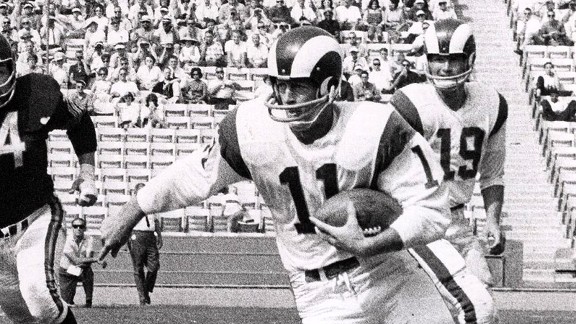
In 1963, the Rams found themselves a true superstar – not just from college football but also college basketball.
To this day Terry Baker is the only player to win a Heisman Trophy and to play in the College Basketball final four tournament in the same season. Baker was quite an athlete.
In 1961 Baker made the front cover of Sports Illustrated and in 1962, he was named the magazine’s Sportsman of the Year. Up until Baker’s Heisman win, no player from West of the Rockies had ever lifted the famous trophy. Baker’s college career with the Oregon State Beavers ended on a high as he ran a 99 yard touchdown in the Liberty Bowl to finish the season as winners.
At the end of the football season, Baker moved swiftly from football to Basketball with the Beavers winning through to the final four basketball tournament where they were defeated by reigning Champions, Cincinatti. Two days after his college basketball career ended, Baker was drafted by the Los Angeles Rams with the #1 pick in the NFL Draft.
Fun fact here, prior to joining up with the Rams, Baker played in the College All Star game, where for the last time a College All Star team defeated an NFL team… the Green Bay Packers.
Baker played three seasons in Los Angeles, although it became apparent that Baker had neither the arm strength or style to fit easily into the NFL. After moving to wide receiver during his third season he moved onto the Canadian football League where he finished his career.
The Modern Era
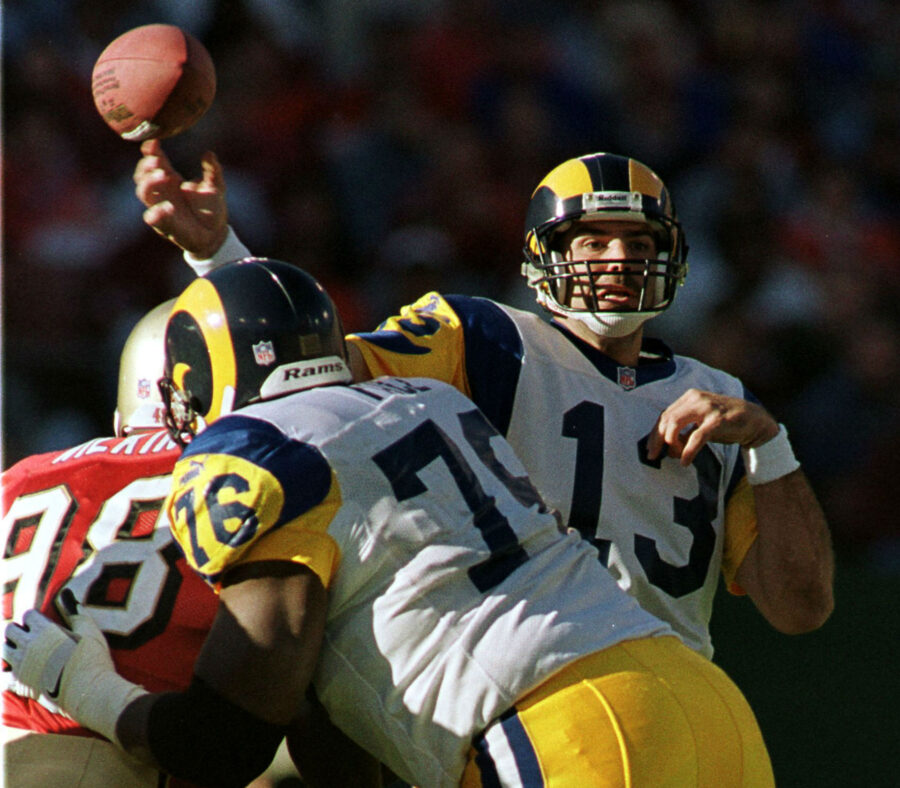
So it’s fair to say that up until this point the Rams have had mixed success with their #1 draft picks, despite selecting players who had proven and stellar college careers. But that was then and this is now. What about the modern era and players selected overall #1 during current times? Well, the Rams have had three #1 picks since 1997, starting with a player who was neither a half back or quarterback, but regardless a player who went to go on to have a Hall of Fame career.
In 1997, the St Louis Rams selected Offensive Tackle, Orlando Pace from the Ohio State University.
To say that Pace was dominant during his college career is an understatement. In 1996 Pace ended fourth in the Heisman voting after a second successive season where he didn’t allow a sack on his quarterback. Heard of the “pancake block” ? Yup, it was named after Pace, who had perfected the slam technique.
Turns out that his stellar college career was just the precursor to a Hall of Fame NFL career. Pace was the first offensive lineman to be selected with the #1 overall pick for nearly 30 years, following Ron Yary in 1968.
In his 12 years as a Ram, the offensive line that Pace protected accumulated over 3,000 yards in each of these seasons. Even more remarkable is that Pace worked with 7 different quarterbacks during this period. Pace was voted to seven successive Pro Bowls during this time and was a cornerstone of the Super Bowl XXXIV winning team.
Orlando Pace was inducted into the College Football Hall of Fame in 2013 and the Pro Football Hall of Fame in 2016.
The Quarterback Era
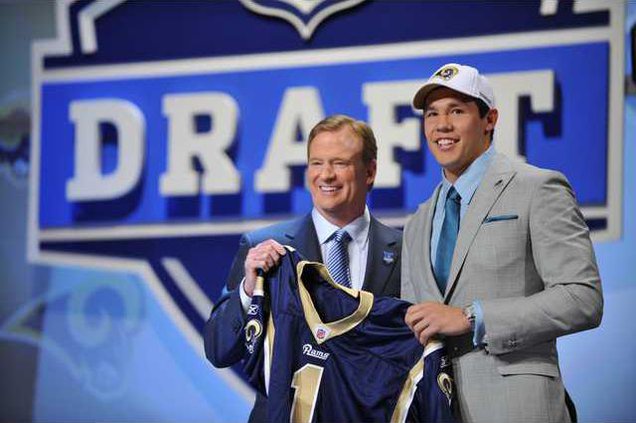
By the time the pro game had made it into the 21st Century, the Quarterback was the position that teams regarded as the premium value pick. In fact from 2001 to 2022, a Quarterback has been selected with the first pick 15 times out of 22. So yes, in 2010 the St Louis Rams selected the Heisman winner from the University of Oklahoma, Sam Bradford.
Bradford’s college career was spectacular, breaking new school records right from the beginning. In his first two games for the Sooners Bradford broke school records and throughout his freshman year he continued to pick up records and awards. The following season Bradford and the Sooners continued this record breaking stretch, culminating in him winning the Heisman beating out both Colt McCoy and Tim Tebow. Tebow would get the last laugh when Florida beat Oklahoma in the 2009 National Championship game.
Bradford’s Junior season was hampered by injury and ended when he required shoulder surgery which ruled him out for the remainder of the season.
#1 pick
At the end of the 2009 season Bradford declared for the NFL Draft and was snapped up by the St Louis Rams with the #1 pick.
Bradford had the same huge impact on the NFL that he had on the college game, justifying his #1 pick status. In his first season with the Rams, Bradford set a new NFL record for the most completions by a rookie which earned him NFL Offensive Rookie of the Year award.
However by 2015 the Rams had decided to move Bradford on, trading him to the Eagles in exchange for Nick Foles. Bradford became something of a journeyman thereafter moving from the Eagles to Vikings to the Arizona Cardinals before retiring from the NFL in 2018.
California Dreaming
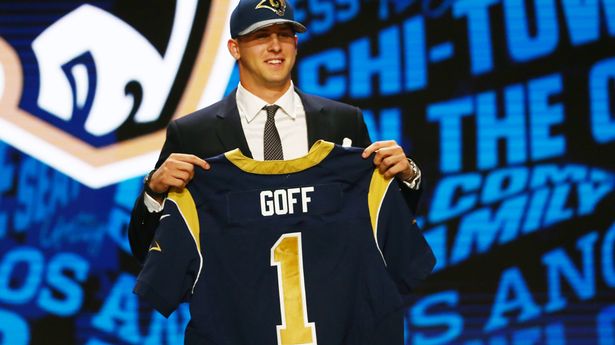
The Rams’ final #1 pick came in 2016. In the 2015 season the Tennessee Titans had succumbed to become the worst ranked team in the NFL and as such had the honour of the first NFL Draft pick in the 2016 Draft.
However for the first time since 2001, the #1 pick was traded away as the Titans took the trade offered by the Rams.
The draft was stacked in terms of overall talent including Zeke Elliott, Jalen Ramsay and Joey Bosa, but was light in terms of elite or NFL-ready quarterbacks.
The two QB’s being touted in such a bracket were Cal’s Jared Goff and North Dakota State’s Carson Wentz.
With the Eagles almost certainly looking to take a quarterback with their second overall pick, the Rams elected to leapfrog Philly into first place and traded up to get their quarterback. With their newly acquired first pick, the Los Angeles Rams selected Jared Goff.
Consensus #1?
Both ESPN analysts, Todd McShay and Mel Kiper Jnr had Goff as the consensus #1 pick, given Goff’s record breaking status in the PAC12. While Cal continued to underperform against expectations, then Golden Bears head coach Sonny Dykes had transformed Goff’s passing game – turning him into the first Cal QB to earn All PAC-12 honours since Aaron Rodgers.
However there was growing momentum that the QB from North Dakota State, Wentz was fast becoming the #1 QB available so there was great debate as to who the Rams had traded up to get. Right up until the last moment, there was fervent discussion over which QB would be picked first.
It’s hard to say if the Eagles did want Wentz over Goff but that’s what they got and the rest is history. Truth is neither of these QB’s has set the heather on fire in the NFL, and as we know both are no longer with the Team’s that drafted them.
Arguably Goff has had the better career so far, continuing to hold down a QB1 place after being traded to the Detroit Lions after five seasons in Los Angeles.
Learning From Past Performance
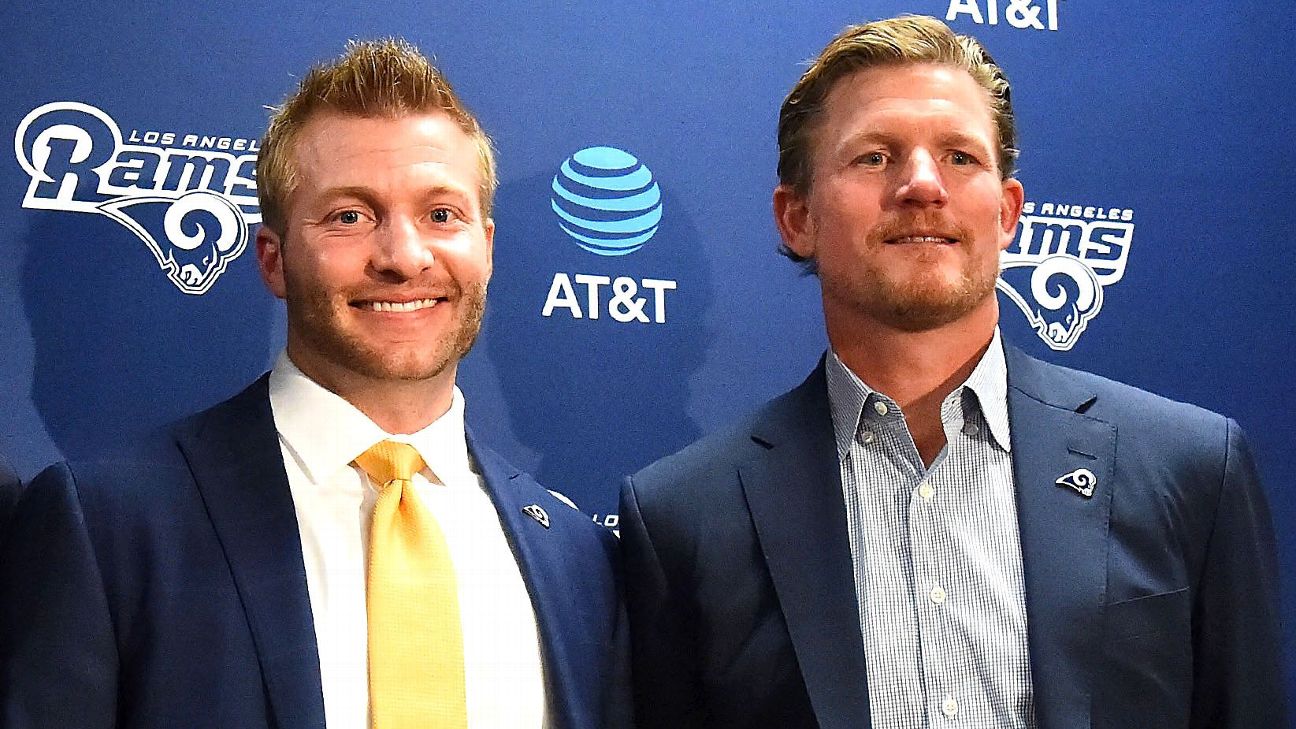
So it’s hard to say if the Rams truly got the value from the #1 picks that you would have expected.
There is no question that they drafted some incredible college football talent but we know from past experience that this does not automatically grant you NFL success.
Arguably and ironically, Orlando Pace may be the best draft pick ever for the Rams. Which goes to show where the value of the #1 pick might be.
But we know come April 2023 that QB’s will fly off the board.
Let’s hope the Rams have learned from all this valuable historical experience.

